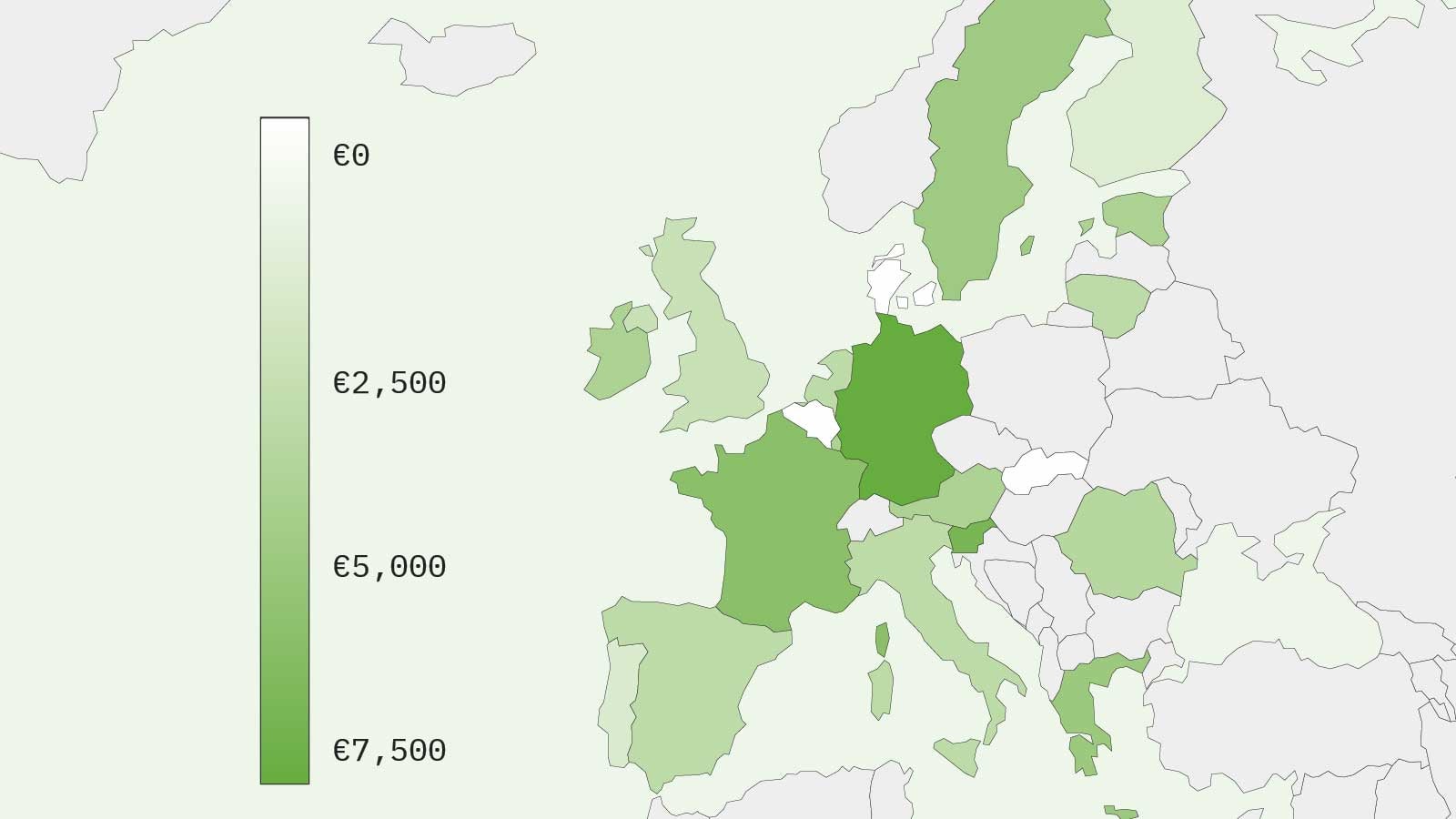
Coronavirus may be causing an economic slump in many sectors of the European economy, but electric vehicles (EVs) isn’t one of them. Perhaps driven by a need for consumers to tighten their belts, interest in lowering fuel costs by buying an electric vehicle has soared – despite their higher upfront cost – but the same phenomenon isn’t being seen in the US or China. What accounts for the difference?
EV sales in Europe grew by 57% in the first half of 2020, while China saw losses of 42% due to the coronavirus market slump, and the US market fell 24% year on year.
Part of the reason why Europe is leading the pack is that strict average fleet limits on CO2 emissions have encouraged a plethora of manufacturers to come to market. The number of battery electric vehicle (BEV) models on the EU market is expected to pass 75 this year, shows analysis by Transport & Environment, a Brussels-based NGO. Only 18 models are on sale in the US and sales were heavily affected by the seven-week shutdown of Tesla due to the virus. Estimates show the company made up 81% of EV sales in the US market in the first half of this year.

US Tariffs are shifting - will you react or anticipate?
Don’t let policy changes catch you off guard. Stay proactive with real-time data and expert analysis.
By GlobalDataThe other factor that made the difference was incentives and subsidies, which are far more common in Europe than in other markets.
Growth was seen everywhere in Europe except in the most advanced market, Norway, where EVs are the most ubiquitous in the world. The Czech Republic had the highest growth in new EV registrations in the EU in the first half of 2020 – more than three times as many as the same period last year.
Despite the Covid-19 pandemic, figures from the European Alternative Fuels Observatory show there were 1,244 registrations of BEVs in the country from January to June, up from just 376 over the same period in 2019. The number of new plug-in hybrid electric vehicle (PHEV) registrations also soared, from 138 to 756, according to the world sales database EV Volumes.
Despite this growth, the Czech Republic still has a way to go to catch the market leaders. Germany registered 92,433 new EVs in the first half of this year, up 99% on the same period in 2019; France 65,164 (up 125%); and the UK 50,238 (up 81%).
Nearly all European countries offer a combination of incentives for low-emissions vehicles, including grants to reduce the purchase cost, tax and registration breaks, and free parking in certain areas. France and Germany recently upped their offerings to prospective electric drivers. Germany raised its purchase subsidy by 50%, and now offers €9,000 off cars costing less than €40,000 – €3,000 of which is paid for by the auto industry. France raised its subsidy from €6,000 to €7,000, with an additional €5,000 on offer for people scrapping their old vehicle.
Slovenia, which has a relatively small but fast-growing EV market, raised its premium from €7,500 to €8,000 in 2020, and has seen registrations more than double, up 125%.
The Czech Republic’s steep growth in registrations may be partly explained by the government’s decision to make battery and fuel cell EVs emitting less than 50gCO2/km exempt from motorway tolls in January 2020.
France and Germany may be leading the way in incentives and volume of sales, but just because a country is selling the most cars doesn’t mean it is the most committed to EVs. To determine that commitment, it is better to look at the percentage of all car registrations that are electric. For that metric, Scandinavia is the clear winner.
For years, Norway has been the unofficial world leader in EV adoption – with 14% of all cars on the road a battery or PHEV. This year 68% of new car registrations in Norway were one of those two types of car – the only European nation to reach above 50%. This came despite overall automobile sales dropping.
Norway has managed to do this without offering direct purchase subsidies (meaning it doesn’t appear on the map above). Instead, the country has exempted BEVs from registration tax since 1990 – and in 2017 incentives for PHEVs were increased.
The US has seen year-on-year sales drop
The US saw 111,000 BEV and PHEV registrations in the first half of 2020 – down 24% from the first half of 2019, according to the EV Volumes database.
The lack of strong federal incentives may partly explain the US decline –along with large disruption due to the coronavirus.
The US federal government has attempted to boost EV sales by offering a $7,500 tax credit to buyers, but it appears not to be enough to motivate consumers. It is also very time-limited – the amount phases down once manufacturers sell 200,000 cars. Notwithstanding its Covid shutdown, Tesla has already hit the threshold for all of its models, as has the Chevrolet Bolt.
Much more interesting incentives are on offer in Democratic states. While state-level EV registration data is not yet available for 2020, there is a clear historical trend between states offering more incentives for BEVs and wider uptake, with California the stand-out champion. The state has the highest subsidies on offer for EVs and also has the most laws designed to encourage their adoption.
This difference in incentives between states means EV uptake is likely to continue to vary more in the US than in the EU. The European experience shows that strong manufacturer incentives, most especially average fleet CO2 limits, have helped foster consistent growth even as subsidies have varying degrees of consumer incentives in the form of subsidies. Stronger CO2 regulation at federal level in the US could have that same effect.



